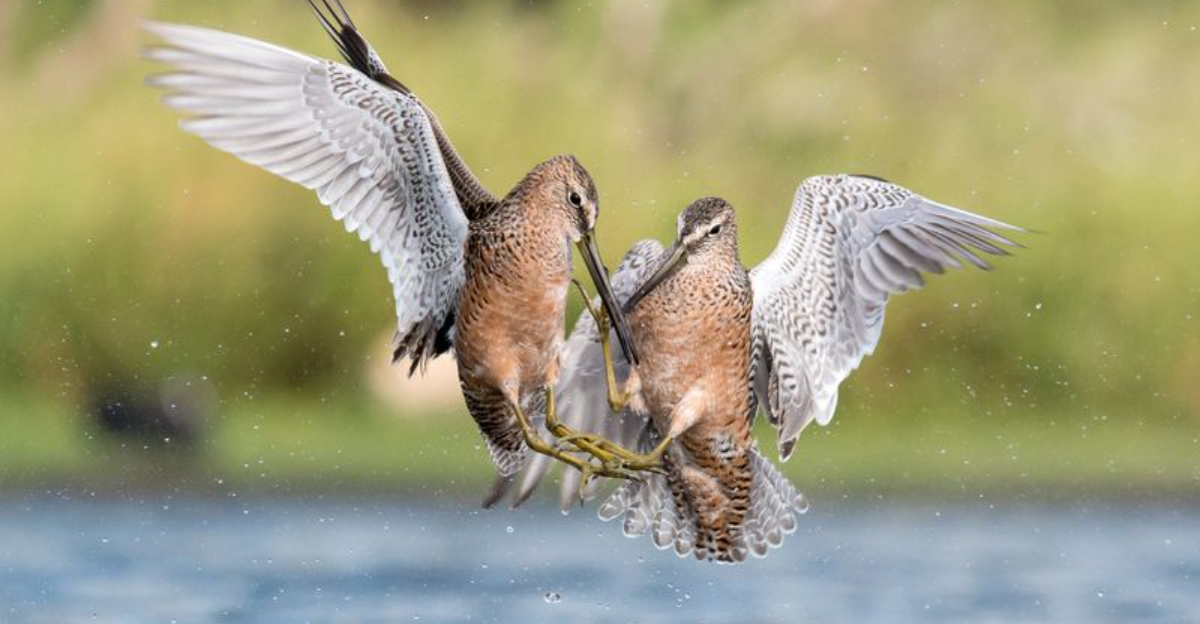Every fall, Texas skies come alive with one of nature’s greatest spectacles.
Millions of birds sweep across the state, pausing to rest and refuel on their long journey south. With the Lone Star State perched along major migration flyways, September through November turns Texas into a dream destination for bird watchers.
So take your field guide, step outside, and get ready to witness beautiful flocks on a journey you won’t forget.
Ruby-throated Hummingbird

Tiny warriors with metallic-green backs and ruby-red throats zip through Texas gardens each fall. These tiny birds weigh less than a penny yet manage a 500-mile nonstop flight across the Gulf of Mexico during migration.
In September, they crowd feeders in a frenzy, nearly doubling their body weight to store up the fuel they need. Watch for them darting among bright flowers or fiercely defending a favorite perch.
I once saw a male ruby-throat chase away a bird ten times its size from my backyard feeder. Fearless and fast, these little flyers need every ounce of energy for their remarkable trip to Central America
Swainson’s Hawk
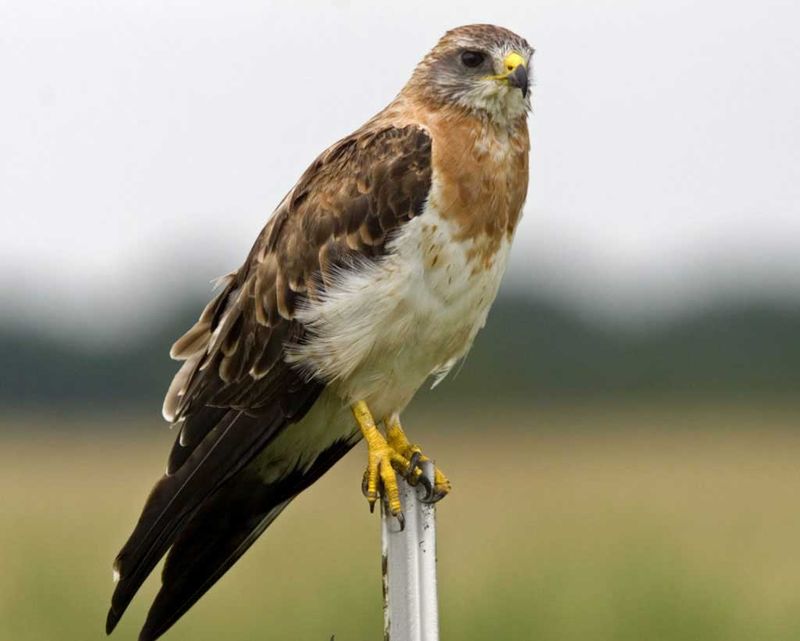
Sky rivers of Swainson’s Hawks darken Texas skies during fall migration. These magnificent raptors form massive kettles, swirling groups of hundreds or even thousands riding thermal currents, creating one of nature’s most spectacular sights.
Easily recognized by their white bellies and dark flight feathers, these hawks travel an astonishing 6,000 miles from North American prairies to Argentina’s pampas. Their migration is among the longest of any American raptor.
Look to open country and farmland, where they feast on grasshoppers and other insects to fuel the journey. Peak passage through Texas occurs from late September through October.
Long-billed Dowitcher
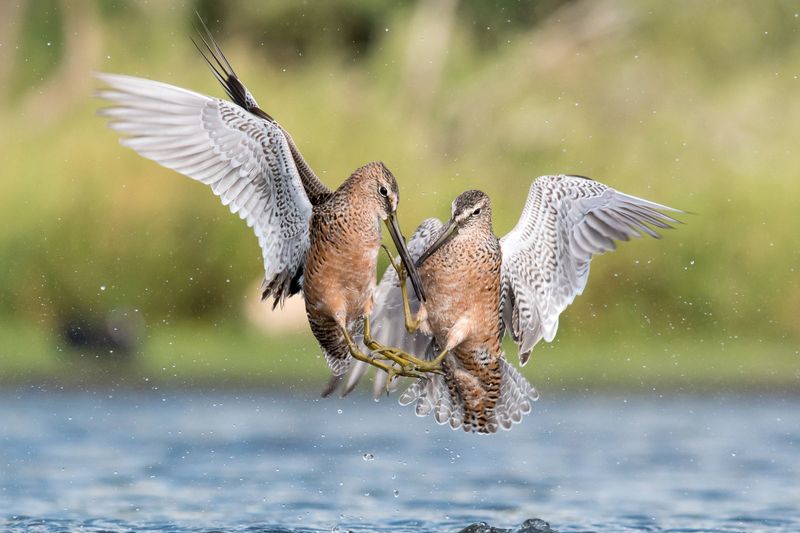
Long-billed Dowitchers bring wetland edges to life during fall migration. Their distinctive up-and-down feeding motion, with long bills jabbing into the mud again and again, looks almost mechanical as they search for invertebrates.
These rusty-colored shorebirds travel from Arctic breeding grounds to wintering areas in Mexico and beyond. Listen for their sharp “keek” calls as flocks communicate overhead.
The best places to see them are shallow wetlands, flooded fields, and reservoir edges across Texas. I once counted more than 200 at a single pond near Galveston, their synchronized feeding creating a hypnotic rhythm across the mudflat.
Cave Swallow

With cinnamon-colored throats and foreheads, Cave Swallows dance across Texas skies each fall. They perform dazzling aerial maneuvers while chasing insects, often gathering into swirling flocks that resemble tornados at dusk.
Once limited to caves in the Edwards Plateau, these adaptable birds now nest beneath bridges and culverts throughout the state. In autumn, they join massive mixed flocks with cliff swallows as they journey toward Mexico.
Highway underpasses near water provide some of the best viewing opportunities. Look for their buffy throats and squared tails as they swoop and dive with remarkable precision, nature’s flying machines in constant motion.
Indigo Bunting
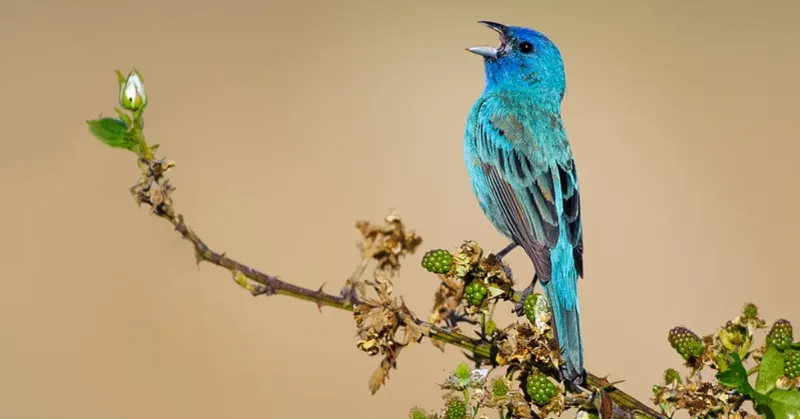
These birds streak through Texas each fall as male Indigo Buntings head south. These dazzling songbirds transform during migration, their brilliant breeding plumage gradually molting into a mottled brown-and-blue winter coat.
Females and young birds wear more modest tan feathers with only subtle hints of blue. They travel mainly at night, guided by the stars, and scientists have found that they can read the night sky much like ancient mariners.
Look for them along woodland edges and weedy fields where they feast on seeds to fuel their long trip to Central America. Their soft, warbling calls are often the first clue that these colorful migrants are passing through your neighborhood.
Cooper’s Hawk
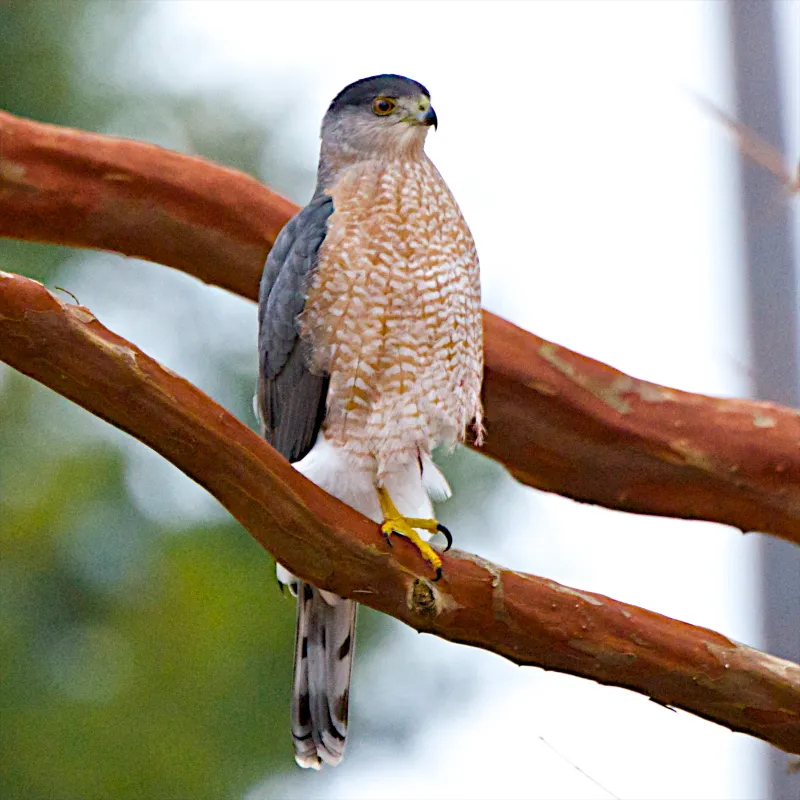
Backyard bird feeders become hunting grounds for Cooper’s Hawks during fall migration. These woodland assassins specialize in catching birds in flight, using their long tails as rudders to navigate through tight spaces at high speed.
Adults sport slate-gray backs, rusty barred chests, and piercing red eyes that miss nothing. Young birds, more numerous during fall passage, wear streaky brown plumage and yellow eyes.
When one appears, the sudden silence of songbirds reveals its presence before you spot it. Last October, a juvenile Cooper’s perched on my fence for twenty minutes, sending my regular feeder visitors into hiding—nature’s perfect predator patiently waiting for someone to make a mistake.
White-winged Dove
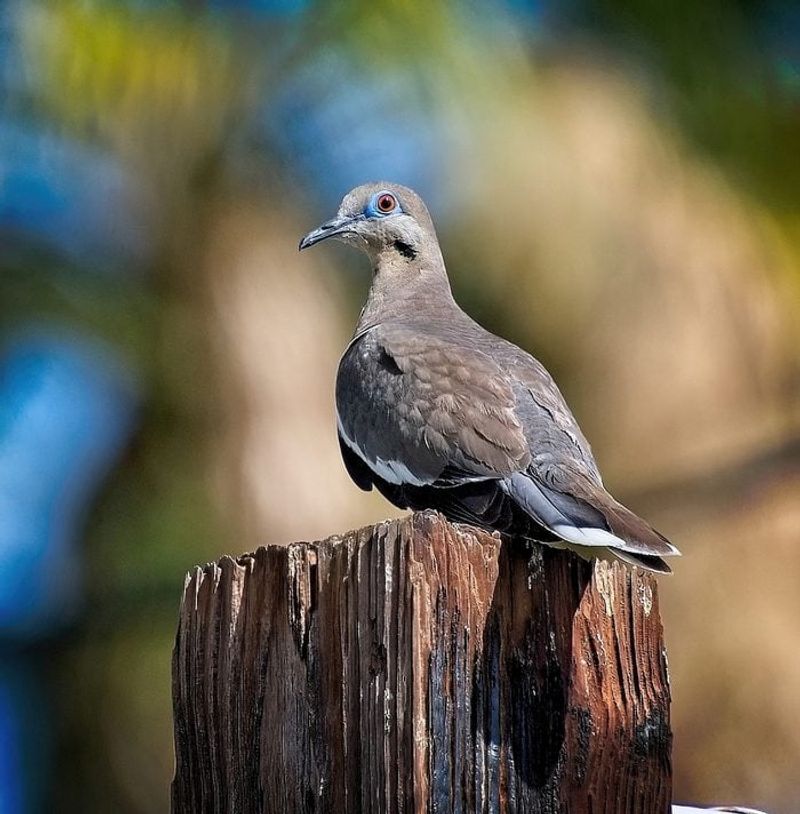
Whistling wings announce White-winged Doves as they gather in massive fall flocks across Texas. Originally desert dwellers from the Rio Grande Valley, these chunky gray birds have expanded northward dramatically in recent decades.
Look for their distinctive white wing patches that flash during flight and the bright blue eye-rings that stand out against gray plumage. Their mournful ‘who-cooks-for-you’ calls echo through neighborhoods as they prepare for migration.
Urban parks and seed-rich agricultural fields attract thousands during September and October. While some populations remain year-round in Texas cities, many still follow ancient migration pathways to Mexico, creating impressive gatherings that remind us of their wild heritage.
